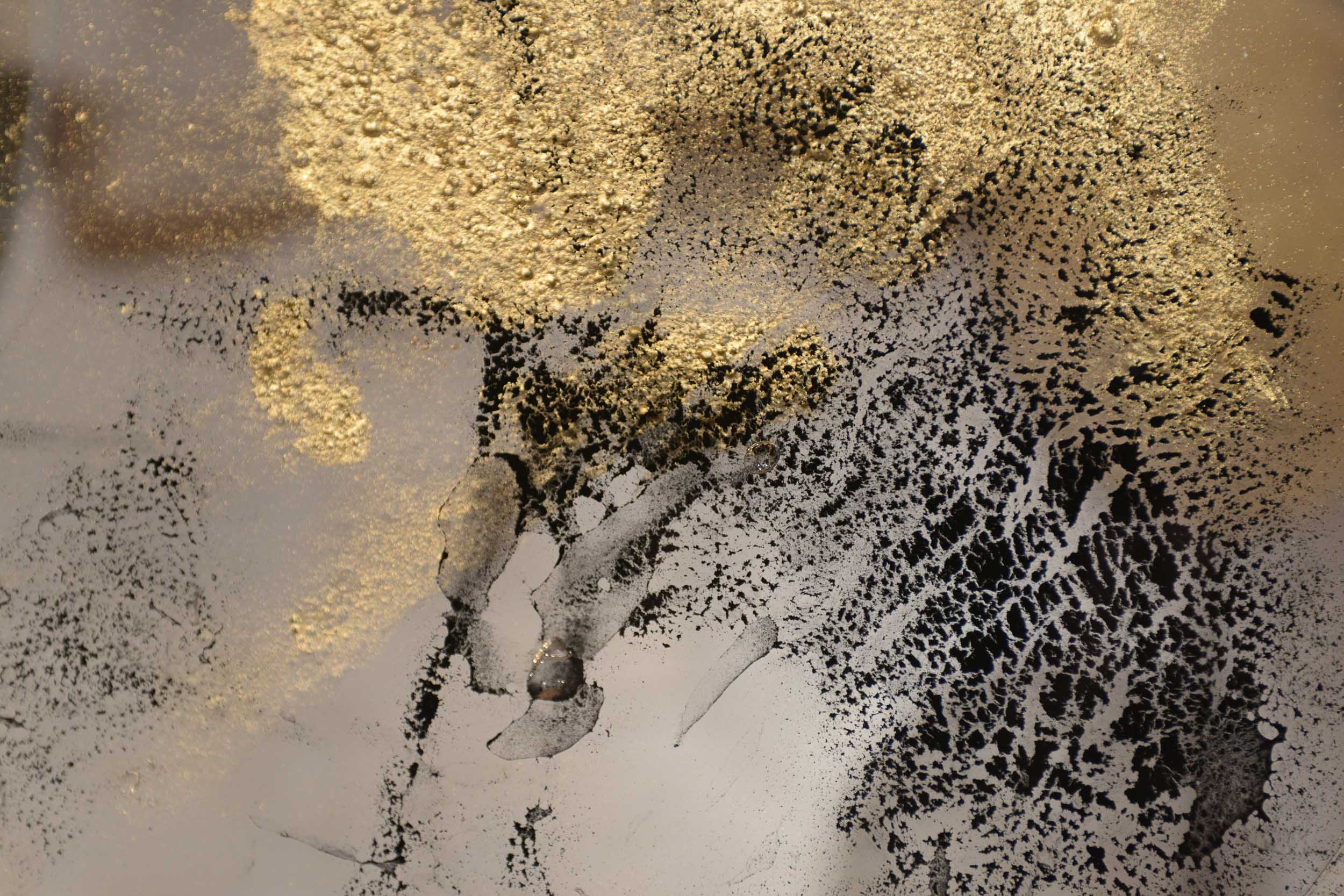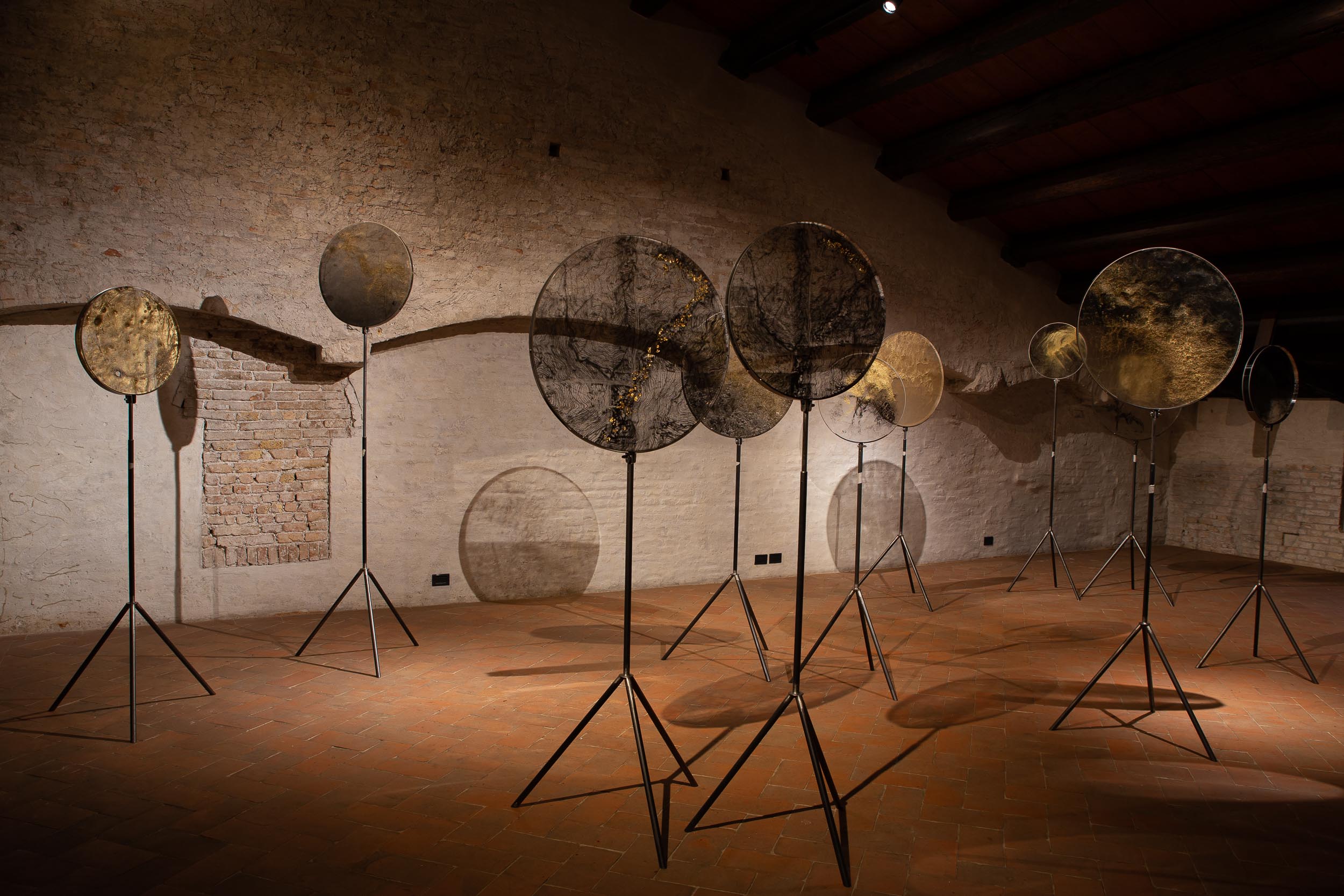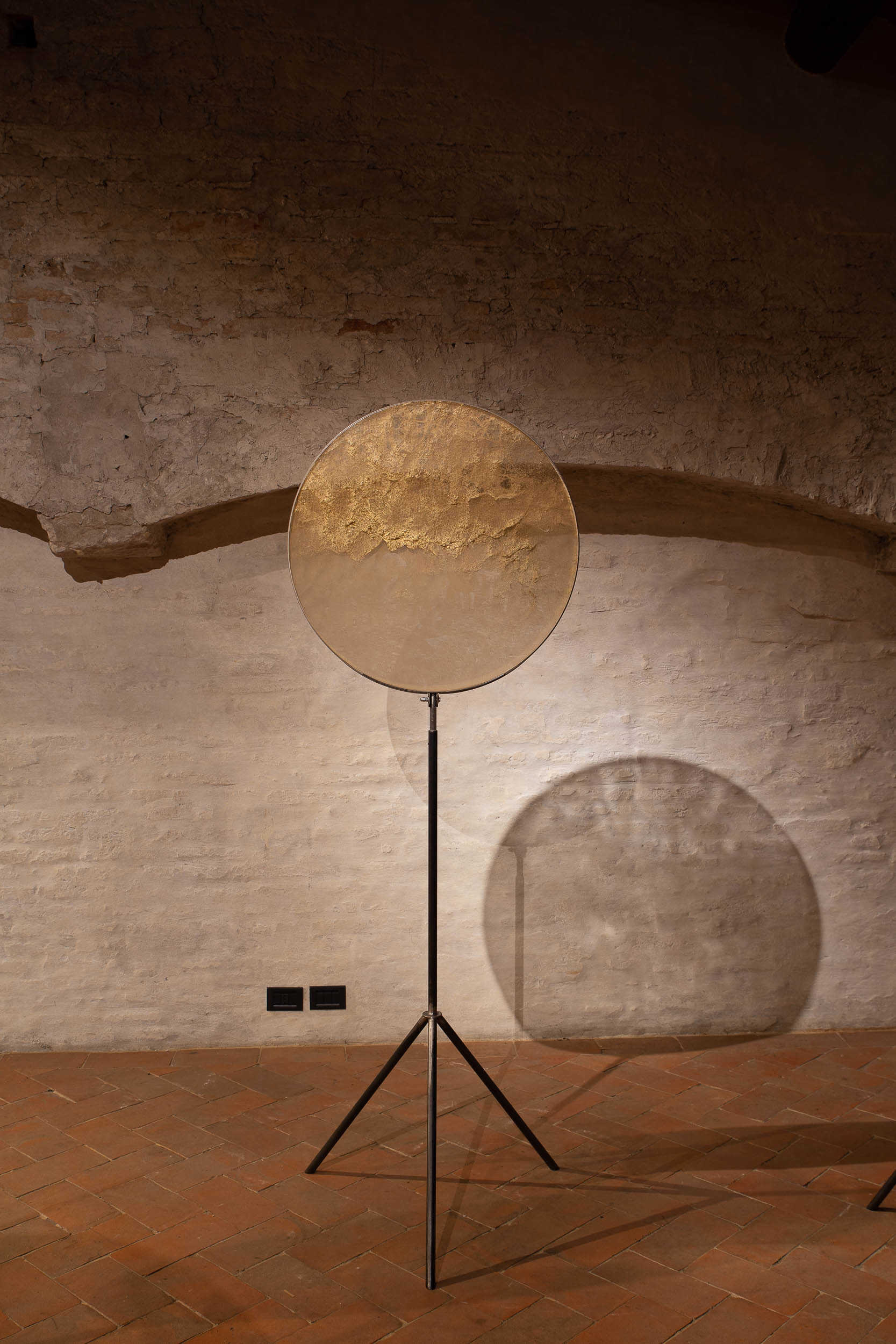Gianni Moretti focuses his attention on the unseen and obscure, the unstable and uncertain situations that require a particular visual and perceptive sensibility. The artist considers art as a tool to reflect on the changes and the transience of organisms, since everything seems temporary and volatile to him: Moretti perceives the current age as a moment characterised by uncertain relationships. From this perspective, he reflects on the hypothesis of seeing mistakes as something inevitable and at the same time salvific and an opportunity for a new beginning. He works with the “false identical,” the settling and reiteration of those shapes that appear similar but never identical and that require the observer to read them on several levels. Moretti’s works are always in progress and their appearances can change over time, thanks to the use of materials and techniques chosen for their unstable nature, thus becoming a guide to expanding and shaping ideas and feelings.
The first stage of his research is characterised by attention to the deposition and stratification of the materials, for instance with the use of the pouncing technique, used to make visible one of the preparatory stages of a fresco that was traditionally seen only by the artist and disappeared once the painting was finished. However, it should be noted that Moretti does not want his work to be recognised for its materials or techniques: it is rather the intention that he wants to emerge, the obsession with making visible the unstable aspect of materials as a metaphor for the uncertainty of existence. At the moment, his research has taken a more visceral direction: now the materials enter their physical and conceptual context, relate to it, and result in works that continue to reveal themselves gradually and that represent conditions of equilibrium ranging from the private to the social and cultural spheres. Moretti’s works are readily provocative, but in a discreet, almost silent, way.
Gianni Moretti (Perugia, 1978) lives and works in Milan. He graduated from the Academy of Fine Arts of Bologna. He participated in many solo and group exhibitions in Italy and abroad, and he collaborated with the MiBACT and the Hongyu International School in Beijing. On 25 April 2015, he inaugurated Anna-Monumento all’attenzione at Sant'Anna di Stazzema, a collective environmental art project still ongoing which commemorates the victims of the Nazi massacre in 1944, in particular the youngest ones who died at the age of 20 days.
SP


